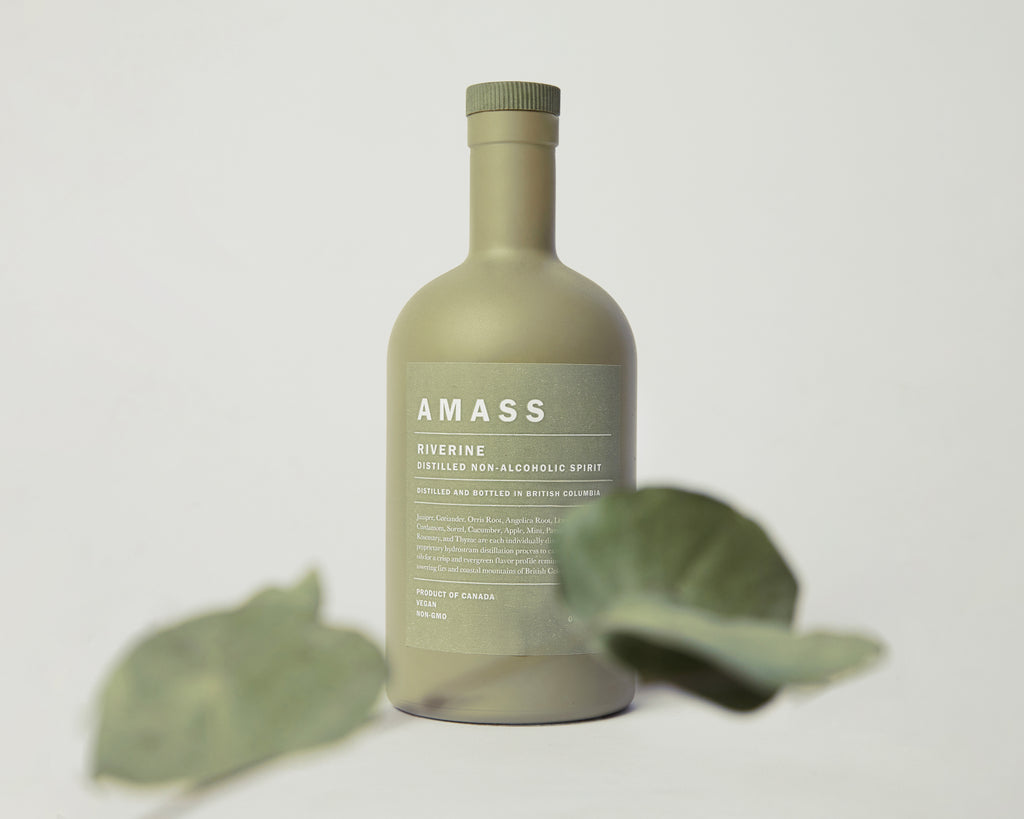Behind the Bottle: How We Made a Non-Alc Spirit
When AMASS Master Distiller Morgan McLachlan set out to design our latest spirit, Riverine, the process began with botanicals, just as it always does. Then she went rogue, ditching the alcohol in favor of something a little lighter: water vapor.
Traditional spirits, like our Gin and Vodka, undergo a distillation process in which alcohol is used to extract oils from a blend of botanicals. With our Gin, that process begins with brighter botanicals, like citrus and California bay leaf, which go into our botanical basket. Meanwhile, earthier, richer botanicals, like Reishi mushroom and juniper, are macerated in alcohol for 18 hours.
From there, we place our spirit base in the kettle of a hybrid Carl pot still, and then run a long, lower-heat distillation where alcohol vapor is passed through a rectification column to soften flavors before joining the remaining botanicals in the botanical basket.
With Riverine, we did things differently. Each of our 14 botanicals is individually distilled in a proprietary hydrosteam distillation process. There, water vapor, instead of alcohol, is used to extract essential oils for a crisp, evergreen flavor profile. The result is a spirit that captures the freshness of the Pacific Northwest, the region where Morgan first forged her passion for plants.
Without the addition of alcohol, all the flavor comes directly from plants. Vibrant botanicals like sumac, sorrel, lemon, and apple are carefully layered along with earthy juniper and parsley. What you get is a complex spirit that is devoid of the dizzying effects that come with drinking a high-proof spirit. There’s none of the harsh burn you’d get from cheap alcohol, either. Instead, it’s smooth, nuanced, herbaceous, and endlessly mixable.
Basically, we took the best of booze and brought it to a non-alcoholic bottle.
Before you dive in, put our tasting tips to good use and learn a bit about the British Columbia island that inspired our first non-alcoholic spirit.

